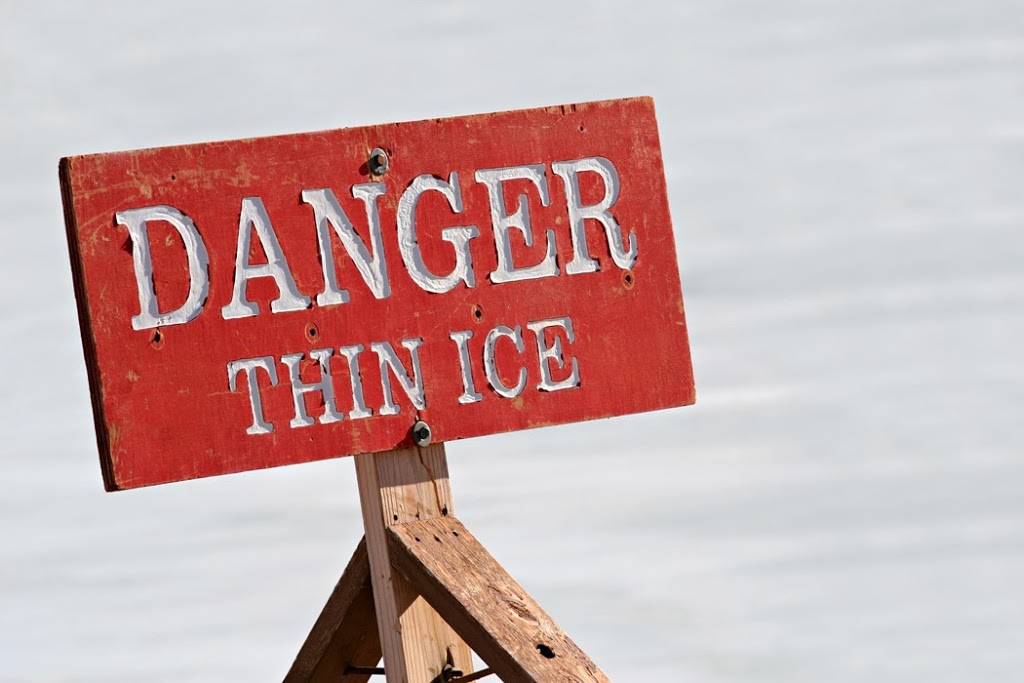This week’s snow and below-freezing weather can make the outdoors treacherous, whether for driving, walking, or during recreation. The Colorado Division of Parks & Wildlife has published some handy ice safety tips, copied below. (Click for their full press release.)
Never go onto the ice alone. Having someone with you means your partner can call or send for help if you fall in.
Remember Reach-Throw-Go. If you are with someone who falls through the ice use this approach. If you can’t reach the person from shore, throw them a floatation device or rope. If you still can’t help the person quickly – go for help. Never attempt to walk out onto the ice to rescue your friend because you might also fall through the ice.
Avoid alcoholic beverages. Alcohol increases your chance for hypothermia, which is the loss of body temperature. It can also lower your inhibitions, increasing the likelihood that you might take risks you otherwise wouldn’t take.
Always wear a life jacket. Wear a lifejacket or personal flotation device (PFD) over winter clothing. Life jackets can provide excellent flotation and protection from hypothermia.
Assemble a personal safety kit. Always wear a safety kit on your body when going out onto the ice. Safety kits should include an ice pick, rope and a whistle to call for help.
Always keep your pets on a leash. Never allow your dog to run out onto the ice and never walk your dog near a frozen lake or pond without a leash. If your dog falls through the ice, do not attempt a rescue. Go for help. If the ice couldn’t support the weight of your animal, it can’t support you.
Even with the best planning and preparation, accidents can happen. If you do fall through the ice, remember the following:
Don’t panic. Try to remain calm to conserve as much energy as possible. Try to get your arms onto the ice and kick as hard as you can with your feet to help lift you onto the ice, and then roll to safety. If you can’t get out of the cold water by yourself, take the following appropriate actions to extend your survival time while waiting to be rescued.
Do not swim. Swimming will cause your body to lose heat much faster than if you stay as still as possible.
Act slowly and deliberately to conserve heat. Expect a progressive decrease in your strength and ability to move. Make the harder maneuvers at the beginning, while you can.
Keep your upper body above water. Keep your head and upper body as far out of the water as reasonably possible to conserve heat.
 There’s lots of outdoor fun to enjoy in Colorado but please do so carefully. No one can guarantee you that the ice is safe. The decision to go onto the ice is personal and should be made only after taking all the precautions to reduce the risk.”
There’s lots of outdoor fun to enjoy in Colorado but please do so carefully. No one can guarantee you that the ice is safe. The decision to go onto the ice is personal and should be made only after taking all the precautions to reduce the risk.”
If you’re driving, another helpful resource on ice safety is Slick Tips from the Colorado Dept. of Transportation, which focuses on safety on icy roads.
- How to Spot the Differences Between Eagles and Hawks - August 16, 2021
- How Transportation Projects Help Tell the Story of Colorado’s Past - August 9, 2021
- Time Machine Tuesday: The Night the Castlewood Canyon Dam Gave Way - August 3, 2021